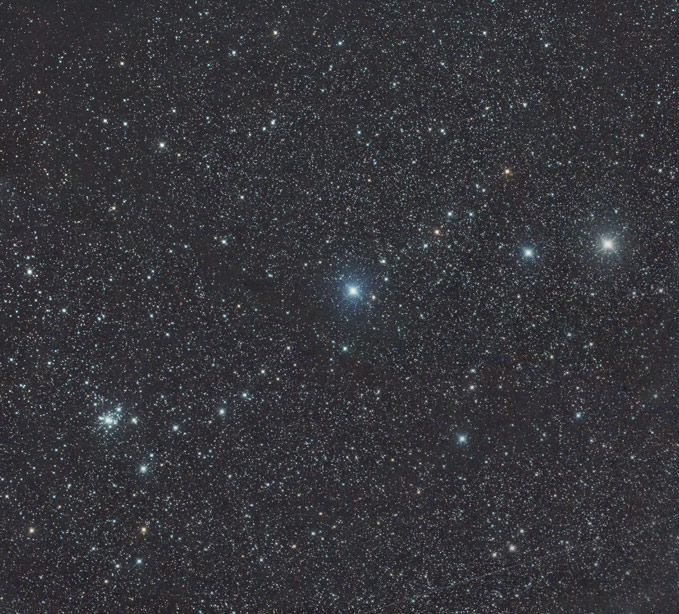| Kemble's cascade / Star chain |
|---|
| R.A. | 04h 00m (2000.0) |
|---|
| Dec. | +63° 00' (2000.0) |
|---|
| Apparent Size | about 2.5° |
|---|
| Real Size | N/A |
|---|
| Magnitude | 8.0 |
|---|
| Distance | N/A |
|---|
Actually it's not nebula nor star cluster, but a picturesque chain of unrelated stars visible with binoculars towards the constellation of Camelopardalis.
This chain is positioned around the northern coast of Milky Way squeezed between Cassiopeia and Perseus,
contains less than 20 stars nearly in a row stretching about 2.5 degrees in length.
This asterism has been made popular by an astronomy enthusiast Lucian Kemble (1922-1999),
star chain looks like a splash flowing from a small open cluster of NGC1502 at eastern tip of chain, this outward give a name of gKemble's Cascadeh.
These stars appear as a string only from our direction in the Milky Way Galaxy.
However it's a very beautiful and impressive asterism, I recommend you try to find in real night sky.
|

